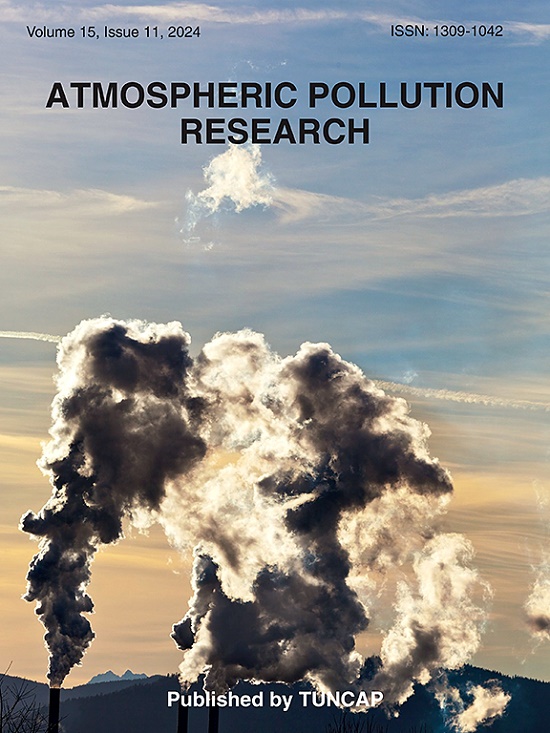超低排放改造后铁矿石烧结中SO2、NOx、颗粒物、二恶英的排放特征及去除效率
IF 3.5
3区 环境科学与生态学
Q2 ENVIRONMENTAL SCIENCES
引用次数: 0
摘要
铁矿石烧结是中国钢铁工业的主要污染源,造成大量二氧化硫、氮氧化物、颗粒物(PM)和二恶英的排放,对空气质量构成严重挑战。超低排放改造是一项通过先进的大气污染控制技术进一步限制工业排放的全国性倡议,本研究评估了超低排放改造在控制烧结烟气多种污染物排放方面的表现。结果表明,超低排放改造显著降低了烧结烟气中SO2、NOx和PM的浓度,改造后的排放因子分别降至0.007、0.005和0.002 kg/t-铁矿石,比改造前降低了98.8% ~ 99.2%。静电除尘器对多污染物的控制能力较好,对SO2、PM、二恶英质量浓度和二恶英I-TEQ的去除率分别为34.1%、93.1%、93.0%和93.8%。同时,半干法脱硫的二恶英去除率分别达到81.7%和82.3%。值得注意的是,选择性催化还原过程中二恶英排放量的意外增加归因于温度依赖性催化重整,这为优化空气污染控制装置配置以避免多污染物控制中的权衡提供了重要见解。本研究为支持中国铁矿石烧结超低排放转型政策提供了工业规模的证据,为协调减排目标与可持续钢铁生产提供了技术上可行的途径。本文章由计算机程序翻译,如有差异,请以英文原文为准。
Emission characteristics and removal efficiencies of SO2, NOx, particulate matter, and dioxins in iron ore sintering after ultra-low emission transformation
Iron ore sintering, as the dominant pollutant source in China's iron and steel industry, is responsible for substantial emissions of SO2, NOx, particulate matter (PM), and dioxins, posing critical challenges to air quality. This study evaluated the performance of ultra-low emission transformation, a nationwide initiative to further restrict industrial emissions through advanced air pollution control technologies, in controlling multi-pollutant emissions from sintering flue gas. The results demonstrated that ultra-low emission transformation significantly reduced the concentrations of SO2, NOx and PM, in sintering flue gas, with emission factors after transformation plummeting to 0.007, 0.005, and 0.002 kg/t-iron ore, respectively, representing reductions of 98.8–99.2 % compared to pre-transformation scenario. The electrostatic precipitator showed a multi-pollutant controlling ability, exhibiting 34.1 %, 93.1 %, 93.0 %, and 93.8 % of SO2, PM, dioxins mass concentration and dioxins I-TEQ removal efficiency, respectively. Meanwhile, the semi-dry flue gas desulfurization achieved81.7 % and 82.3 % dioxins removal efficiency. Notably, the unexpected increase in dioxin emissions across selective catalytic reduction, attributed to temperature-dependent catalytic reformation, provides critical insights for optimizing air pollution control device configurations to avoid trade-offs in multi-pollutant control. This work provides industrial-scale evidence supporting China's ultra-low emission transformation policy in iron ore sintering, offering a technically available pathway to reconcile emission reduction targets with sustainable steel production.
求助全文
通过发布文献求助,成功后即可免费获取论文全文。
去求助
来源期刊

Atmospheric Pollution Research
ENVIRONMENTAL SCIENCES-
CiteScore
8.30
自引率
6.70%
发文量
256
审稿时长
36 days
期刊介绍:
Atmospheric Pollution Research (APR) is an international journal designed for the publication of articles on air pollution. Papers should present novel experimental results, theory and modeling of air pollution on local, regional, or global scales. Areas covered are research on inorganic, organic, and persistent organic air pollutants, air quality monitoring, air quality management, atmospheric dispersion and transport, air-surface (soil, water, and vegetation) exchange of pollutants, dry and wet deposition, indoor air quality, exposure assessment, health effects, satellite measurements, natural emissions, atmospheric chemistry, greenhouse gases, and effects on climate change.
 求助内容:
求助内容: 应助结果提醒方式:
应助结果提醒方式:


